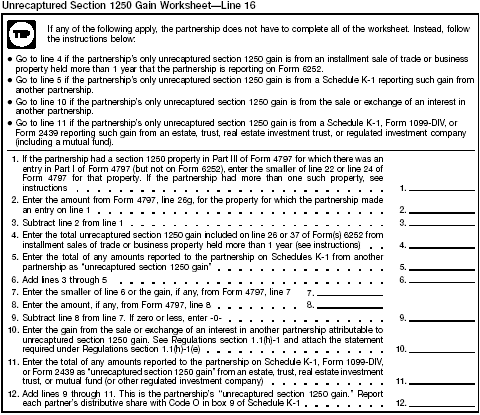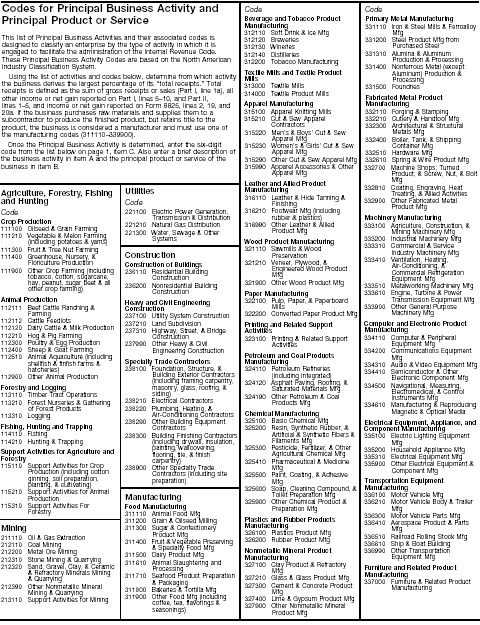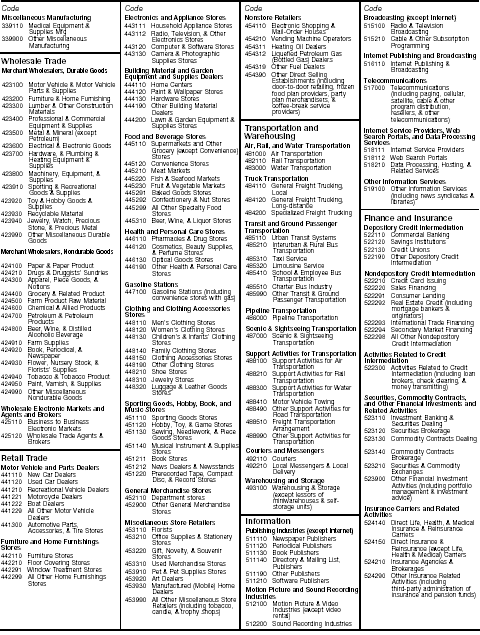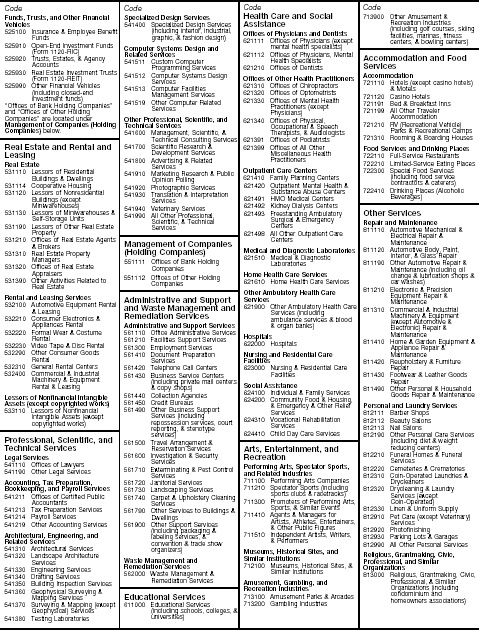Line 16
For line 16, attach a schedule listing other items and amounts required to be reported separately to partners. Enter each partner's share in box 9 or on an attached schedule to Schedule K-1. Examples of items to report include the following:
- Any information a partnership must separately report to its disqualified partners regarding its oil and gas activities. See Partnerships Holding Oil and Gas Properties on page 12 for more information. Enter this information as Code M in box 9 of Schedule K-1 or on an attached schedule.
- Other tax-exempt income. On the schedule for line 16, enter all income of the partnership exempt from tax other than tax-exempt interest income (e.g., life insurance proceeds). The adjusted basis of the partner's interest is increased by the amount shown on this line under section 705(a)(1)(B). Enter this amount as Code N1 in box 9 of Schedule K-1.
- Nondeductible expenses. Enter nondeductible expenses paid or incurred by the partnership. Do not include capital expenditures or items the deduction for which is deferred to a later tax year. The adjusted basis of the partner's interest is decreased by the amount shown on this line under section 705(a)(2)(B). Enter this amount as Code N2 in box 9 of Schedule K-1.
- Unrelated business taxable income. Any information a partner that is a tax-exempt organization may need to figure that partner's share of unrelated business taxable income under section 512(a)(1) (but excluding any modifications required by paragraphs (8) through (15) of section 512(b)). Partners are required to notify the partnership of their tax-exempt status. See Form 990-T, Exempt Organization Business Income Tax Return, for more information. Enter this amount as Code N3 in box 9 of Schedule K-1.
- Amounts paid during the tax year for health insurance coverage for a partner (including that partner's spouse and dependents). For 2002, a partner may be allowed to deduct up to 70% of such amounts on Form 1040, line 30. Enter this amount as Code N4 in box 9 of Schedule K-1.
- Distributions of money (cash and marketable securities). Enter the total distributions to each partner of cash and marketable securities that are treated as money under section 731(c)(1). Generally, marketable securities are valued at FMV on the date of distribution. However, the value of marketable securities does not include the distributee partner's share of the gain on the securities distributed to that partner. See section 731(c)(3)(B) for details. If this amount includes marketable securities treated as money, state separately on an attachment (a) the partnership's adjusted basis of those securities immediately before the distribution and (b) the FMV of those securities on the date of distribution (excluding the distributee partner's share of the gain on the securities distributed to that partner). Enter this information as Code N5 in box 9 of Schedule K-1 or on an attached schedule.
- Distributions of property other than money. Enter the total distributions of property other than money. In computing the amount of the distribution, use the adjusted basis of the property to the partnership immediately before the distribution. On an attachment also include the adjusted basis and FMV of each property distributed. Enter this information as Code N6 in box 9 of Schedule K-1 or on an attached schedule.
- Gain from the sale or exchange of qualified small business stock (as defined in the instructions for Schedule D) that is eligible for the 50% section 1202 exclusion. The section 1202 exclusion applies only to qualified small business stock issued after August 10, 1993, and held by the partnership for more than 5 years. Corporate partners are not eligible for the section 1202 exclusion. Additional limitations apply at the partner level. Report each partner's share of section 1202 gain with Code N7 in box 9 of Schedule K-1. Each partner will determine if he or she qualifies for the section 1202 exclusion. Report with Code N7 on an attachment to Schedule K-1 for each sale or exchange the name of the corporation that issued the stock, the partner's share of the partnership's adjusted basis and sales price of the stock, and the dates the stock was bought and sold.
- Gain eligible for section 1045 rollover (replacement stock purchased by the partnership). Include only gain from the sale or exchange of qualified small business stock (as defined in the instructions for Schedule D) that was deferred by the partnership under section 1045 and reported on Schedule D. See the instructions for Schedule D for more details. Corporate partners are not eligible for the section 1045 rollover. Additional limitations apply at the partner level. Report each partner's share of the gain eligible for section 1045 rollover with Code N8 in box 9 of Schedule K-1. Each partner will determine if he or she qualifies for the rollover. Report with Code N8 on an attachment to Schedule K-1 for each sale or exchange the name of the corporation that issued the stock, the partner's share of the partnership's adjusted basis and sales price of the stock, and the dates the stock was bought and sold.
- Gain eligible for section 1045 rollover (replacement stock not purchased by the partnership). Include only gain from the sale or exchange of qualified small business stock (as defined in the instructions for Schedule D) the partnership held for more than 6 months but that was not deferred by the partnership under section 1045. See the instructions for Schedule D for more details. A partner (other than a corporation) may be eligible to defer his or her distributive share of this gain under section 1045 if he or she purchases other qualified small business stock during the 60-day period that began on the date the stock was sold by the partnership. Additional limitations apply at the partner level. Report with Code N9 on an attachment to Schedule K-1 for each sale or exchange the name of the corporation that issued the stock, the partner's share of the partnership's adjusted basis and sales price of the stock, and the dates the stock was bought and sold.
- Unrecaptured section 1250 gain. Use the worksheet on page 30 to figure the unrecaptured section 1250 gain.
- Any information needed by a partner to figure the interest due under section 1260(b). If any portion of a constructive ownership transaction was open in any prior year, each partner's tax liability must be increased by the partner's pro rata share of interest due on any deferral of gain recognition. See section 1260(b) for details, including how to figure the interest.
- Extraterritorial income exclusion. See the instructions on page 12 for information that is required to be reported in box 9 of Schedule K-1.
- Commercial revitalization deduction from rental real estate activities. If the deduction is for a nonrental building, it is deducted by the partnership on line 23 of Form 1065-B. See the instructions for line 23 on page 17.
- Recapture of credits. Report the recapture of any credit (other than the low-income housing credit or investment credit) as a separately stated item. See the instructions for line 26 on page 17 for reporting the recapture of the low-income housing credit and investment credit.
- Tax shelter disclosure statement. If the partnership participates in a reportable tax shelter transaction, attach a copy of the partnership's tax shelter disclosure statement to Schedule K-1 or provide the information each partner will need to complete a tax shelter disclosure statement for the transaction on an attachment to Schedule K-1. See Tax shelter disclosure statement on page 7 for more details.
- Any other information a partner may need to file his or her return that is not shown elsewhere on Schedule K-1. Enter this information on an attachment to Schedule K-1.
Instructions for the Unrecaptured Section 1250 Gain Worksheet
Lines 1 through 3. If the partnership had more than one property described on line 1, complete lines 1 through 3 for each property on a separate worksheet. Enter the total of the line 3 amounts for all properties on line 3 and go to line 4.

Unrecaptured Section 1250 Worksheet
Line 4. The total unrecaptured section 1250 gain for an installment sale of property held more than 1 year is figured for the year of sale in a manner similar to that used to figure line 3 of the worksheet. However, the unrecaptured section 1250 gain must be allocated to the installment payments received from the sale. To do so, the partnership generally must treat the gain allocable to each installment payment as unrecaptured section 1250 gain until all such gain has been used in full. Figure the unrecaptured section 1250 gain for installment payments received during the tax year as the smaller of (a) the amount from line 26 or line 37 of Form 6252 (whichever applies) or (b) the total unrecaptured section 1250 gain for the sale reduced by all gain reported in prior years (excluding section 1250 ordinary income recapture). However, if the partnership chose not to treat all of the gain from payments received after May 6, 1997, and before August 24, 1999, as unrecaptured section 1250 gain, use only the amount the partnership chose to treat as unrecaptured section 1250 gain for those payments to reduce the total unrecaptured section 1250 gain remaining to be reported for the sale.
Box 9 Codes (Schedule K-1)
The following codes should be used to describe the information located in box 9.
- Code A1 - General partner's taxable income (loss) from trade or business activities.
- Code A2 - General partner's net capital gain (loss) from trade or business activities.
- Code A3 - General partner's 28% rate gain (loss) from trade or business activities.
- Code A4 - General partner's general credits from trade or business activities.
- Code A5 - General partner's nonconventional source fuel credit from trade or business activities.
- Code A6 - General partner's alternative minimum tax adjustment from trade or business activities.
- Code B1 - General partner's taxable income (loss) from rental real estate activities.
- Code B2 - General partner's net capital gain (loss) from rental real estate activities.
- Code B3 - General partner's 28% rate gain (loss) from rental real estate activities.
- Code B4 - General partner's general credits from rental real estate activities.
- Code B5 - General partner's low-income housing credit (for property placed in service after 1989) from rental real estate activities.
- Code B6 - General partner's rehabilitation credit from rental real estate activities.
- Code B7 - General partner's alternative minimum tax adjustment from rental real estate activities.
- Code C1 - General partner's taxable income (loss) from other rental activities.
- Code C2 - General partner's net capital gain (loss) from other rental activities.
- Code C3 - General partner's 28% rate gain (loss) from other rental activities.
- Code C4 - General partner's general credits from other rental activities.
- Code C5 - General partner's alternative minimum tax adjustment from other rental activities.
- Code D - 28% rate gain (loss) from passive activities.
- Code E - 28% rate gain (loss) from other activities.
- Code F - Guaranteed payments.
- Code G - Income from discharge of indebtedness.
- Code H - Tax-exempt interest income.
- Code I - Rehabilitation credit from rental real estate activities.
- Code J - Nonconventional source fuel credit.
- Code K1 - Net earnings (loss) from self-employment.
- Code K2 - Gross nonfarm income.
- Code L1 - Name of foreign country or U.S. possession.
- Code L2 - Gross income from all sources.
- Code L3 - Gross income sourced at partner level.
- Code L4(a) - Passive foreign source income.
- Code L4(b) - Listed foreign categories of income.
- Code L4(c) - General limitation foreign source income.
- Code L5 - Interest expense allocated and apportioned at the partner level.
- Code L6 - Other expenses allocated and apportioned at the partner level.
- Code L7(a) - Deductions allocated and apportioned at partnership level to passive foreign source income.
- Code L7(b) - Deductions allocated and apportioned at partnership level to listed foreign categories of income.
- Code L7(c) - Deductions allocated and apportioned at partnership level to general limitation foreign source income.
- Code L8(a) - Total foreign taxes paid.
- Code L8(b) - Total foreign taxes accrued.
- Code L9 - Reduction in taxes available for credit.
- Code M - Oil and gas activities.
- Code N1 - Other tax-exempt income.
- Code N2 - Nondeductible expenses.
- Code N3 - Unrelated business taxable income.
- Code N4 - Health insurance.
- Code N5 - Distributions of money (cash and marketable securities).
- Code N6 - Distributions of property other than money.
- Code N7 - Gain eligible for section 1202 exclusion.
- Code N8 - Gain eligible for section 1045 rollover-stock replaced.
- Code N9 - Gain eligible for section 1045 rollover-stock not replaced.
- Code O - Unrecaptured section 1250 gain.
- Code P1 - Foreign trading gross receipts.
- Code P2 - Extraterritorial income exclusion.
- Code Q - Qualified 5-year gain.
- Code R - Commercial revitalization deduction.
Analysis of Net Income (Loss)
For each type of partner shown, enter the portion of the amount shown on line 1 that was allocated to that type of partner. Report all amounts for limited liability company members on the line for limited partners. The sum of the amounts shown on line 2 must equal the amount shown on line 1. In addition, the amount on line 1 must equal the amount on line 9, Schedule M-1.
In classifying partners who are individuals as active or passive, the partnership should apply the rules below. In applying these rules, a partnership should classify each partner to the best of its knowledge and belief. It is assumed that in most cases the level of a particular partner's participation in an activity will be apparent:
- If the partnership's principal activity is a trade or business, classify a general partner as active if the partner materially participated in all partnership trade or business activities; otherwise, classify a general partner as passive.
- If the partnership's principal activity consists of a working interest in an oil or gas well, classify a general partner as active.
- If the partnership's principal activity is a rental real estate activity, classify a general partner as active if the partner actively participated in all of the partnership's rental real estate activities; otherwise, classify a general partner as passive.
- Classify as passive all partners in a partnership whose principal activity is a rental activity other than a rental real estate activity.
- If the partnership's principal activity is a portfolio activity, classify all partners as active.
- Classify as passive all limited partners and LLC members in a partnership whose principal activity is a trade or business or rental activity.
- If the partnership cannot make a reasonable determination whether a partner's participation in a trade or business activity is material or whether a partner's participation in a rental real estate activity is active, classify the partner as passive.
Schedule L - Balance Sheet per Books
The balance sheets should agree with the partnership's books and records. Attach a statement explaining any differences.
Partnerships reporting to the Interstate Commerce Commission (ICC) or to any national, state, municipal, or other public officer may send copies of their balance sheets prescribed by the ICC or national, state, or municipal authorities, as of the beginning and end of the tax year, instead of completing Schedule L. However, statements filed under this procedure must contain sufficient information to enable the IRS to reconstruct a balance sheet similar to that contained on Form 1065-B without contacting the partnership during processing.
All amounts on the balance sheet should be reported in U.S. dollars. If the partnership's books and records are kept in a foreign currency, the balance sheet should be translated in accordance with U.S. generally accepted accounting principles (GAAP).
Exception. If the partnership or any qualified business unit of the partnership uses the United States dollar approximate separate transactions method, Schedule L should reflect the tax balance sheet prepared and translated into U.S. dollars according to Regulations section 1.985-3(d), and not a U.S. GAAP balance sheet.
Line 5 - Tax-Exempt Securities
Include on this line:
- State and local government obligations, the interest on which is excludable from gross income under section 103(a) and
- Stock in a mutual fund or other regulated investment company that distributed exempt-interest dividends during the tax year of the partnership.
Line 18 - All Nonrecourse Loans
Nonrecourse loans are those liabilities of the partnership for which no partner bears the economic risk of loss.
Schedule M-1 - Reconciliation of Income (Loss) per Books With Income (Loss) per Return
Line 3 - Guaranteed Payments
Include on this line guaranteed payments shown on Schedule K, line 7.
Line 4b - Travel and Entertainment
Include on this line:
- Meal and entertainment expenses not deductible under section 274(n).
- Expenses for the use of an entertainment facility.
- The part of business gifts over $25.
- Expenses of an individual allocable to conventions on cruise ships over $2,000.
- Employee achievement awards over $400.
- The part of the cost of entertainment tickets that exceeds face value (also subject to 50% limit).
- The part of the cost of skyboxes that exceeds the face value of nonluxury box seat tickets.
- The part of the cost of luxury water travel expenses not deductible under section 274(m).
- Expenses for travel as a form of education.
- Nondeductible club dues.
- Other travel and entertainment expenses not allowed as a deduction.
Schedule M-2 - Analysis of Partners' Capital Accounts
Show what caused the changes during the tax year in the partners' capital accounts as reflected on the partnership's books and records.
The partnership may, but is not required to, use the rules in Regulations section 1.704-1(b)(2)(iv) to determine the partners' capital accounts in Schedule M-2. If the beginning and ending capital accounts reported under these rules differ from the amounts reported on Schedule L, attach a statement reconciling any differences.
Line 2 - Capital Contributed During Year
Include on line 2a the amount of money contributed and on line 2b the amount of property contributed by each partner to the partnership as reflected on the partnership's books and records.
Line 3 - Net Income (Loss) per Books
Enter on line 3 the net income (loss) shown on the partnership books from Schedule M-1, line 1.
Line 6 - Distributions
Line 6a - Cash. Enter on line 6a the amount of money distributed to each partner by the partnership.
Line 6b - Property. Enter on line 6b the amount of property distributed to each partner by the partnership as reflected on the partnership's books and records. Include withdrawals from inventory for the personal use of a partner.
| Paperwork Reduction Act
Notice. We ask for the information on this form to
carry out the Internal Revenue laws of the United States.
You are required to give us the information. We need it
to ensure that you are complying with these laws and to
allow us to figure and collect the right amount of tax.
You are not required to provide the information requested
on a form that is subject to the Paperwork Reduction Act
unless the form displays a valid OMB control number. Books
or records relating to a form or its instructions must
be retained as long as their contents may become material
in the administration of any Internal Revenue law. Generally,
tax returns and return information are confidential, as
required by section 6103. The time needed to complete
and file this form and related schedules will vary depending
on individual circumstances. The estimated average times
are: |
| Form |
Recordkeeping |
Learning about the law or the form
|
Preparing the form |
Copying, assembling, and sending the
form to the IRS |
| Form 1065-B |
50 hr., 50 min. |
22 hr., 12 min. |
33 hr., 21 min. |
2 hr., 40 min. |
| Schedule D (Form 1065-B) |
13 hr., 23 min. |
2 hr., 47 min. |
3 hr., 7 min. |
|
| Schedule K-1 (Form 1065-B) |
9 hr., 5 min. |
7 hr., 31 min. |
11 hr., 43 min. |
|
| Schedule L (Form 1065-B) |
15 hr., 46 min. |
12 min. |
27 min. |
|
| Schedule M-1 (Form 1065-B) |
3 hr., 21 min. |
12 min. |
15 min. |
|
| Schedule M-2 (Form 1065-B) |
3 hr., 6 min. |
6 min. |
9 min. |
|
| If you have comments concerning
the accuracy of these time estimates or suggestions for
making these forms simpler, we would be happy to hear
from you. You can write to the Tax Forms Committee, Western
Area Distribution Center, Rancho Cordova, CA 95743-0001.
Do not send the tax form to this address. Instead,
see Where To File on page 3. |

Codes for Principal Business Activity and Principal Product or Service

Page 2 of Codes for Principal Business Activity and Principal Product or Service

Page 3 of Codes for Principal Business Activity and Principal Product or Service
Previous | First
Instructions Index | 2002 Tax Help Archives | Tax Help Archives | Home
